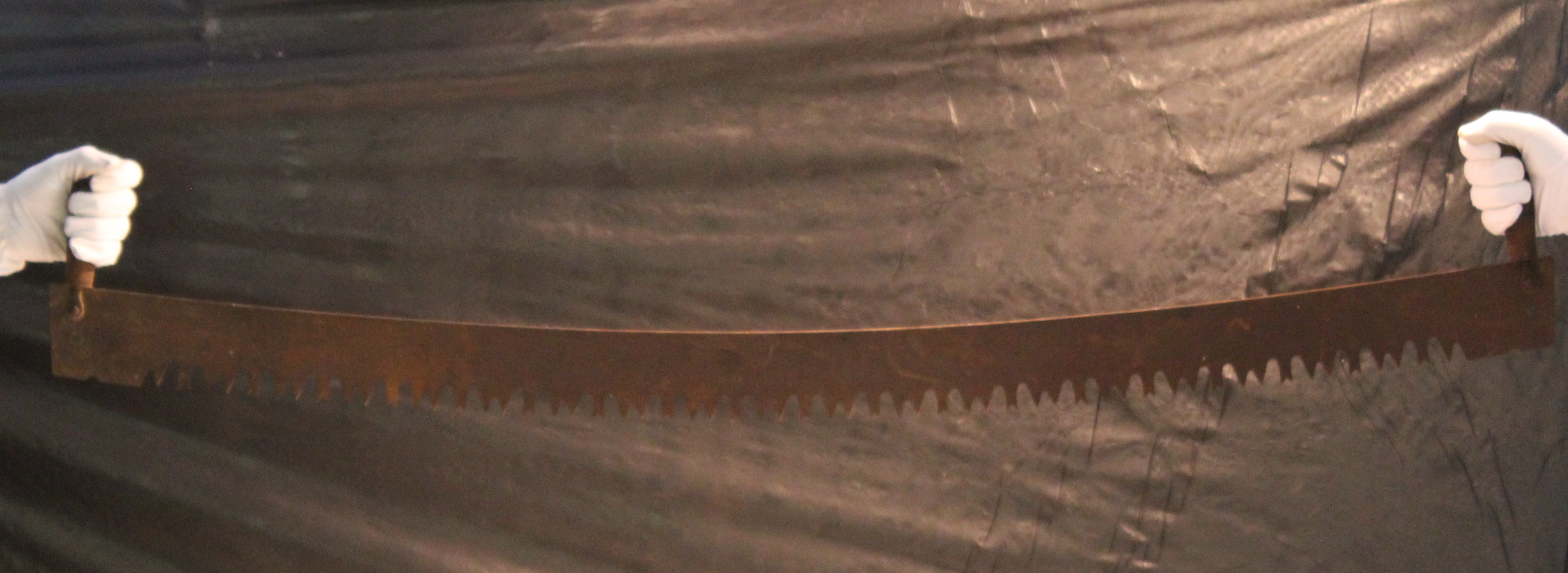Historic Tools of North Castle
Two-Man Saw (2)
There are two two-man saws at Smith’s Tavern: a shorter saw (T235) and a longer saw (no ID #).
Also known as the misery whip, this saw was designed for use by two sawyers. Two-man crosscut saws primarily important when human power was used. Such a saw would typically be 4 to 12 feet long and sometimes up to 16 feet, with a handle at each end. In some cases, such as when felling Giant Sequoias sawblades could be brazed together end-to-end in order to create longer saws.
The technique in using a two-man saw involved a sawyer standing at each end. Together the sawyers would alternate pulling the saw through the wood. If the kerf began closing, causing the saw to bind, wedges would be inserted behind the saw blade in order to keep the kerf open. Cutting from underneath a suspended log, called "under bucking", might also have been used if binding became a big problem.
Many variations on the design were used, but they mainly fell into two types. Felling saws were used to fell the trees, and bucking saws were used to cut felled trees into lumber. The two applications require slightly different designs: a felling saw has a narrower blade, allowing wedges to be more easily inserted, while a bucking saw has a wider blade, giving it more strength. The saw at Smith’s Tavern is most likely a bucking saw.
Two-man saws were designed to cut in both directions. Careful tooth design was necessary to clear the sawdust during the cut.
Reference: https://en.wikipedia.org/wiki/Two-man_saw
Catalog Items:
Item T235
| Location: | Panel 16 (T235) |
|---|---|
| Length: | 137 cm |
| Width: | 21 cm |
| Height: | 20 cm |
Item None
| Location: | Panel 17 |
|---|---|
| Length: | 184 cm |
| Width: | 17 cm |
| Height: | 27 cm |
| Weight: | 2074 g |

